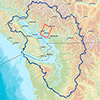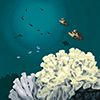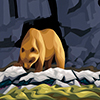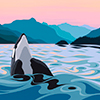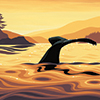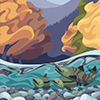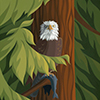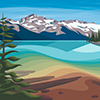Art for Sea to Sky: Grove
Stand. Shelter. Haven. Kelp forests/Ḵw’emḵwum on the West Coast are renowned for their structure and beauty. Tall fronds (Sḵw’umay̓ tl’a ḵw’um) of golden kelp reach for the surface, swaying with movement to the motion of the tide. But that is not where their majesty ends. These underwater forests of Giant Kelp, Bull Kelp, Bottom Kelp and Seaweeds are an extremely important ecosystem to a large array of species. They act as a refuge for Otter/Temus, Seals/Asxw, Sea Birds, Salmon and Rockfish, Herring/Slhawt’, Anchovy, Shiner Perch, Sea Stars/Tumelḵlh, Crabs/Ayx̱, Urchins (Skw’its’ay and X̱ix̱wa), small fishes and invertebrates. Even large mammals such as Orca/Yew̓yews and Humpback/Ḵwenis have been known to roll in the thick mats of floating kelp.
These forests of the sea also act as a blue carbon sink: it is estimated that marine algae and kelp are responsible for producing 70-80% of the Earth’s atmospheric oxygen. Kelp are a keystone to the health of the
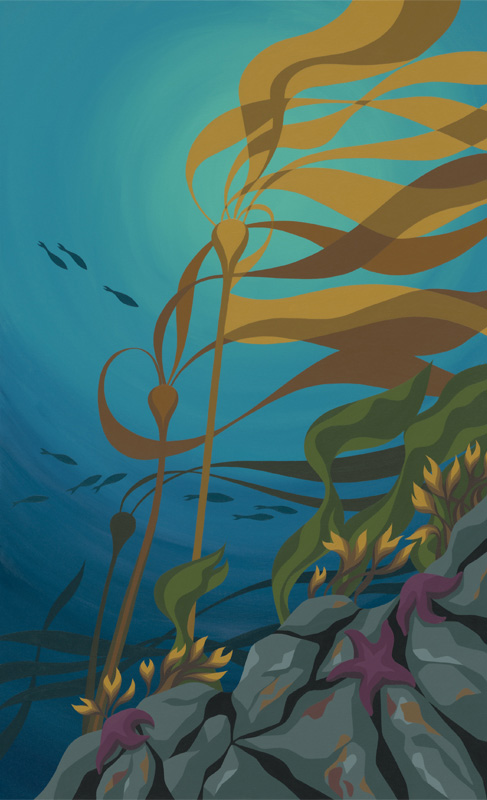
Grove – 30”x48” – 2021 – acrylic on canvas
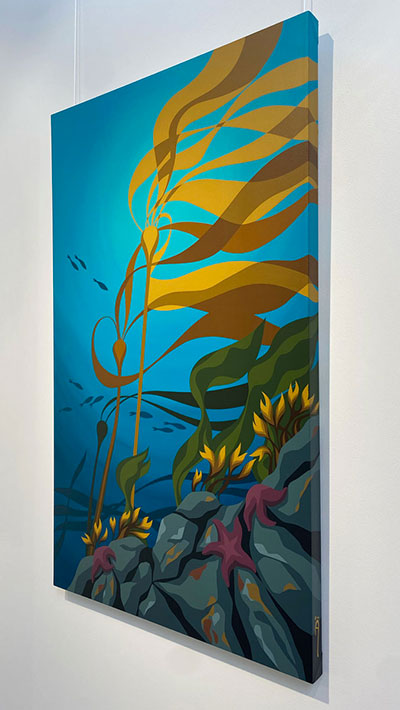
planet and yet here in Atl’ka7tsem/Howe Sound these ecosystems are struggling.
Relationships in the web of life are none more apparent than under the sea within the Forests of Kelp/Ḵw’um. Even a slightest change in one aspect can throw an entire ecosystem out of wack. For example, a decline in Sea Star/Tumelḵlh populations here in the Sound has encouraged an overabundance of Green Urchin/Skw’its’ay (a favorite food of the Sunflower Sea Star). Urchin numbers have exploded and as a result entire forests of kelp have been eaten clean. These areas are now known as ‘urchin barrens’. It is a stark reminder of the importance of balance within a healthy and functioning ecosystem.
Special thank you to Adam Taylor of the Marine Life Sanctuary Societies of BC for providing reference photos and information for this painting



